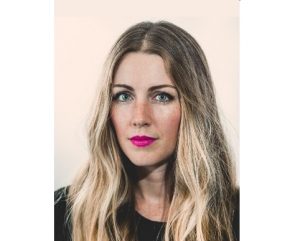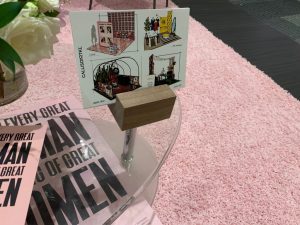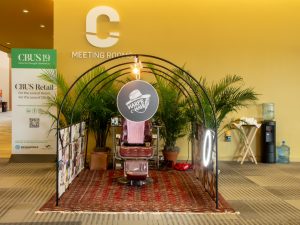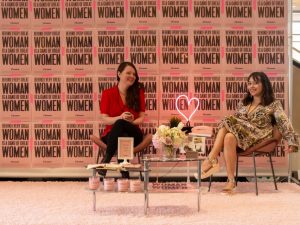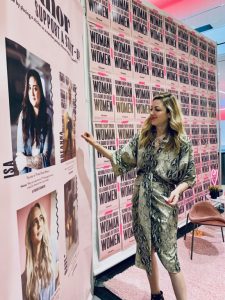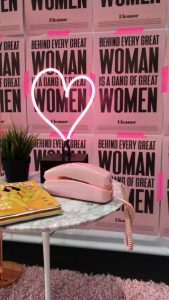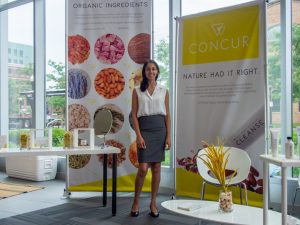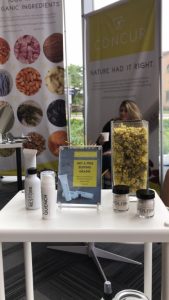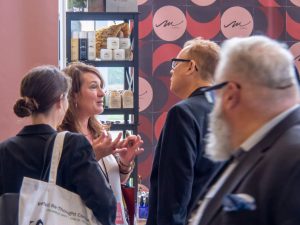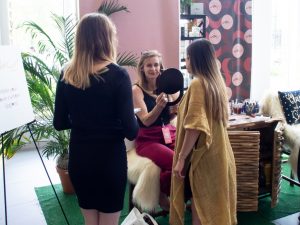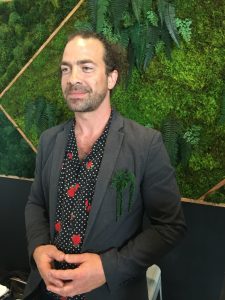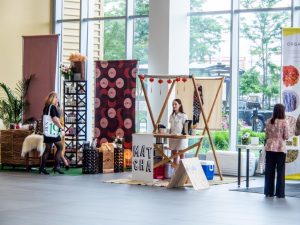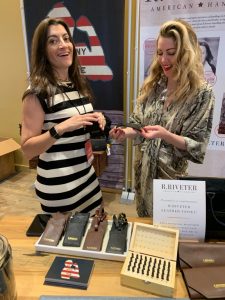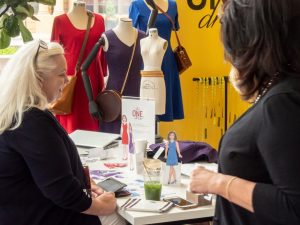What does an experience (or pop-up) cost nowadays? Can you design, build and execute a pop-up for under $10,000? How about with only a $500.00 budget? Impossible, you say? The activations at the CBUS19 event in Columbus, Ohio, earlier this month, dubbed the Pop-up Hub, did just that. Utilizing a combination of new tactics learned from years of visual merchandising hacks, begging and borrowing and flexing some tried-and-true design processes, we changed the way we worked to accommodate emerging start-up brands with physical spaces.
The focus of these pop-ups was to tell designers’ stories, and for them to be able to interact with customers in a way that was both personal and authentic. The challenge was the bottom line: With a finite budget for materials and resources, we not only had to dig deep but utilize DIY tactics to create this pop-up magic.
Here are the stories of two pop-ups that I designed on a shoestring budget, based on only one or two meetings and the brand’s Instagram feeds as my design inspiration.
After a dinner and a bottle (or two) of wine with hair stylist Meg Harpe, I set off to design the Harpe Hair barbershop pop-up. Meg cuts hair out of an Airstream, so it was a no brainer to create her space as an idealized Airstream. The idea was fed (and wined) from the moments and conversations we had about how she views life, her customers and how she likes to work. “Why not?!” became our go-to mantra when we questioned if people would actually stop for a haircut at a conference. But we believed in the concept, and we believed they would stop … and stop they did!
The pop-up was designed with all off-the-shelf items. I gave her a rendering with the conceptual design and a chart with pieces to buy. The pièce de résistance was an $89.00 metal greenhouse structure. Without the cover, the metal frame became the perfect open-air representation of her Airstream. In Meg’s real life Airstream, she has plastered the ceiling with magazine pin-ups, and I wanted to continue this same idea with a collage of vintage pin-ups on the sides of the pop-up’s walls. We used her existing barber chair, mirror, lights and borrowed an oriental rug. Not only did the pop-up look almost identical to my original sketch (which, by the way, is the biggest thank you anyone could ever give a designer). The icing on the cake was her brand being discovered by a large retailer at the conference.
The second budget pop-up example was for “This One Dress” brand. Created with mostly donated items, I designed the pop-up inspired by a picture of the owner’s wooden mirror. The “sunshine yellow [for the fitting area] meets design studio-esque” space was meant to reflect the owners’ bright, bubbly personalities. As a digital native brand, the challenge was not having the physical garments available to try on. This rendered an actual fitting room unnecessary, so we instead incorporated a “fit” pedestal. Paper dolls replaced people, as customers were given a cut-out variety of the brand’s style silhouettes. Attendees could then play with and select their favorite dress combinations in a distinctly whimsical way. (I’d like to give a big shout out to my best friend, IKEA.)
Advertisement
Next time you think you need a huge budget to create a buzz, remember that the experience is about the connection. The pop-ups were set up to tell personal stories, and while we want to “get customers,” it’s more important that we’re building relationships. Anyone can walk into a store or buy an item from the Internet; loyalty to retailers no longer exists. So what are we giving them? What will bring them back again and again? The answer is in redefining their experience. Experience is connection, and experience is just what the attendees of CBUS19 got to have! Whether you have $10,000 or $10, connection doesn’t cost a thing, and that’s the best money-saving advice I can offer.
Faith Huddleston Bartrug (Columbus, Ohio) of CallisonRTKL has more than a decade of experience in transforming national brands. Her background includes brand strategy, environmental design and visual merchandising for prestigious brands including LVMH, Starwood Retail Partners, Neiman Marcus and Kohls, to name a few. As an integral member of the firm’s retail practice, she creates visual statements that bring merchandise to life.


 Photo Gallery3 days ago
Photo Gallery3 days ago
 Headlines1 week ago
Headlines1 week ago
 Sector Spotlight2 weeks ago
Sector Spotlight2 weeks ago
 Headlines1 week ago
Headlines1 week ago
 Headlines4 days ago
Headlines4 days ago
 Headlines2 weeks ago
Headlines2 weeks ago
 Designer Dozen1 week ago
Designer Dozen1 week ago
 Headlines2 days ago
Headlines2 days ago
